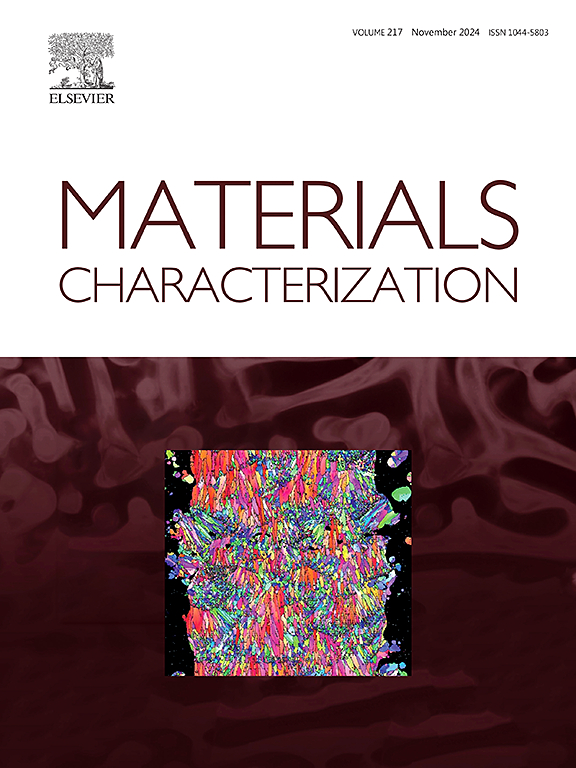Effects of heat treatment on microstructure, mechanical properties and corrosion resistance 13Cr-2Ni-2Mo martensitic stainless steel
IF 4.8
2区 材料科学
Q1 MATERIALS SCIENCE, CHARACTERIZATION & TESTING
引用次数: 0
Abstract
The effects of varying austenitizing and tempering temperatures on the microstructure, mechanical properties, and corrosion resistance of newly developed 13Cr-2Ni-2Mo martensitic stainless steel for marine and coastal applications were systematically investigated. The findings indicate that the highest hardness and optimal corrosion resistance are achieved with austenitizing at 1150 °C. This is due to the dissolution of carbides back into the matrix, which results in solid solution strengthening and an elevated chromium content within the matrix. The steel exhibits the highest hardness when subjected to tempering at 150 °C. As the tempering temperature increases, the dislocation density in the matrix decreases, and different carbides precipitate in the order of M3C, M7C3, and M23C6. During the tempering process, reverse austenite forms along the boundaries of martensite laths, exhibiting the phenomenon known as the “austenite memory effect.” A competitive relationship between reverse austenite and carbides with regard to carbon has been observed. The precipitation of carbides at tempering temperatures of 450–500 °C results in secondary hardening. The 13Cr-2Ni-2Mo steel exhibits the most favorable corrosion resistance when tempered at 150 °C, with a corrosion current density of 5.50 × 10−7 A/cm2 and a pitting potential of 0.307 V in a 3.5 % NaCl solution. As the tempering temperature increases, the precipitation of M7C3 and M23C6 carbides results in a decrease in the chromium content of the matrix. This leads to the formation of chromium-depleted zones and a looser passivation film structure, which in turn reduces the pitting resistance and corrosion resistance. This study systematically correlates heat treatment, microstructural evolution, mechanical performance, and corrosion behavior of 13Cr-2Ni-2Mo stainless steel, providing insights for optimizing its performance in marine and coastal applications.
求助全文
约1分钟内获得全文
求助全文
来源期刊

Materials Characterization
工程技术-材料科学:表征与测试
CiteScore
7.60
自引率
8.50%
发文量
746
审稿时长
36 days
期刊介绍:
Materials Characterization features original articles and state-of-the-art reviews on theoretical and practical aspects of the structure and behaviour of materials.
The Journal focuses on all characterization techniques, including all forms of microscopy (light, electron, acoustic, etc.,) and analysis (especially microanalysis and surface analytical techniques). Developments in both this wide range of techniques and their application to the quantification of the microstructure of materials are essential facets of the Journal.
The Journal provides the Materials Scientist/Engineer with up-to-date information on many types of materials with an underlying theme of explaining the behavior of materials using novel approaches. Materials covered by the journal include:
Metals & Alloys
Ceramics
Nanomaterials
Biomedical materials
Optical materials
Composites
Natural Materials.
 求助内容:
求助内容: 应助结果提醒方式:
应助结果提醒方式:


